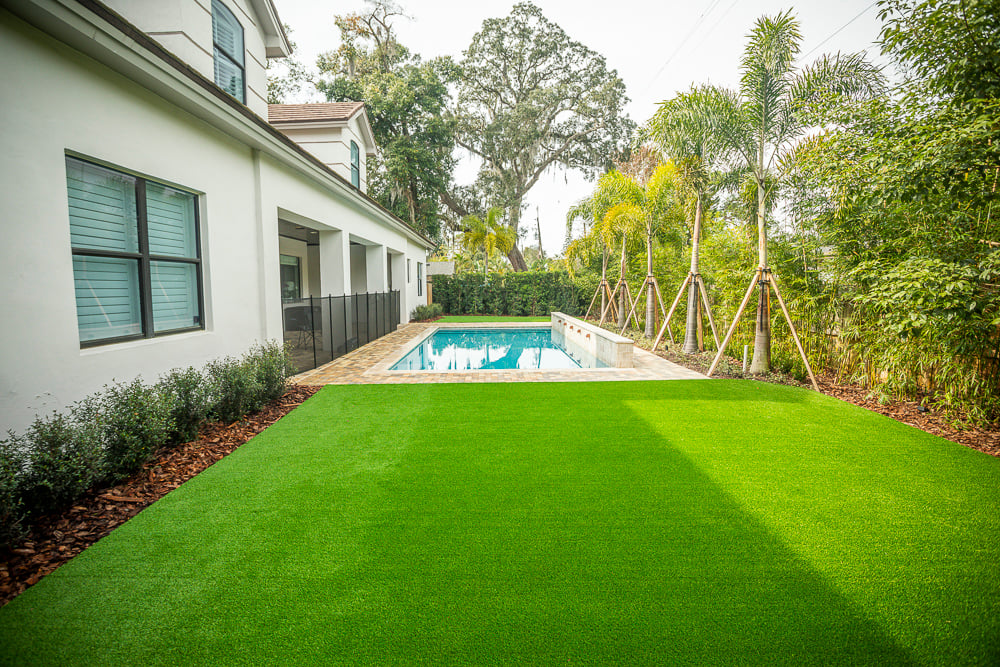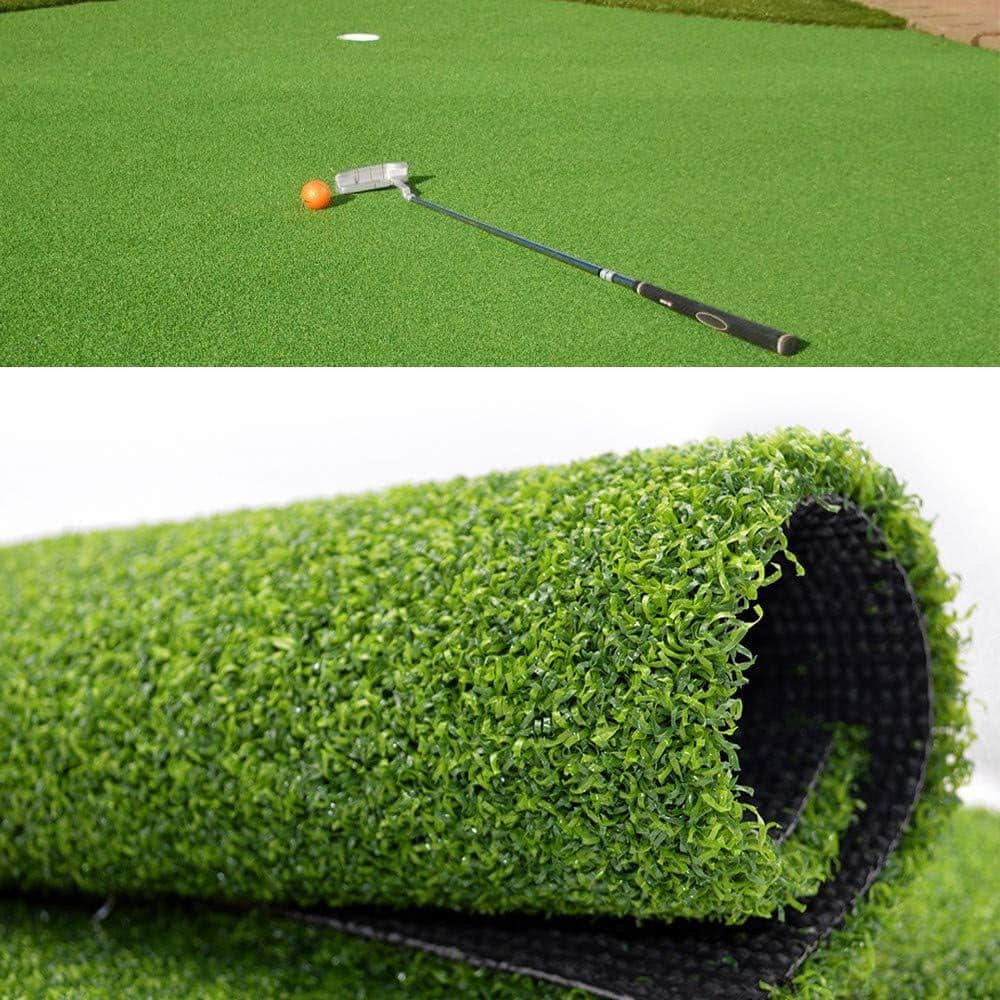Enhance Your Outdoor Space with Arizona Artificial Turf for a Evergreen Green Look
Enhance Your Outdoor Space with Arizona Artificial Turf for a Evergreen Green Look
Blog Article
Look Into the Environmental Conveniences of Opting for Artificial Turf Solutions
The fostering of synthetic grass services provides an engaging chance to resolve pushing ecological obstacles. By considerably decreasing water use and lessening the application of unsafe chemicals, these choices not only advertise lasting landscape design however additionally shield local ecological communities. The lower carbon footprint associated with lowered maintenance activities contributes to a more lasting approach to land monitoring. The effects of these advantages expand past plain conservation efforts, elevating concerns regarding their long-lasting influence on environment conservation and general environmental equilibrium. Discovering these dimensions reveals a complicated interplay worth thinking about.
Water Conservation Conveniences
One of the most substantial benefits of synthetic grass is its capacity to save water. Standard turf lawns require considerable watering, especially in locations prone to dry spell or water restrictions. In comparison, synthetic turf does not need watering, dramatically reducing the overall demand for water resources. This function is specifically helpful in arid areas where water shortage is a pushing issue.
By removing the requirement for normal watering, synthetic turf contributes to sustainable landscape techniques and aids minimize the environmental impact of excessive water usage. The preservation of water prolongs to the decrease of runoff, which can lead to dirt erosion and river pollution.
Furthermore, the setup of synthetic grass allows property owners and municipalities to assign water sources much more efficiently, concentrating on essential usages such as alcohol consumption water and agriculture. The change in the direction of synthetic grass not only advertises responsible water usage but also aligns with wider environmental objectives aimed at preserving natural deposits.
As communities significantly focus on sustainability, the water conservation benefits of man-made lawn provide a compelling case for its fostering in property and industrial landscape design jobs.
Decreased Chemical Use
The shift to synthetic grass substantially reduces the reliance on chemical treatments commonly made use of in natural yard maintenance. Conventional lawn administration usually involves the application of herbicides, fertilizers, and pesticides to advertise development and control insects. These chemicals can posture risks to human wellness, regional wild animals, and the environment, adding to dirt and water contamination.
On the other hand, synthetic grass eliminates the demand for these unsafe substances. When mounted, it requires marginal upkeep, largely consisting of routine cleaning and infrequent infill replenishment. This decrease in chemical use not only profits the immediate setting yet likewise adds to wider eco-friendly stability. By reducing the release of artificial substances right into the environment, synthetic grass advertises much healthier dirt and water systems.
Furthermore, the absence of chemical drainage connected with artificial lawn installations assists protect regional rivers from air pollution, supporting aquatic life and preserving biodiversity. Phoenix turf companies. As areas increasingly prioritize sustainable practices, selecting synthetic grass provides a practical service that straightens with ecological preservation goals. With this shift, homeowner can enjoy lush eco-friendly spaces without endangering eco-friendly health, leading the method for a much more sustainable future
Reduced Carbon Impact

Moreover, the installment of synthetic grass can cause significant water preservation. All-natural lawns need significant amounts of water for watering, which not just contributes to the carbon footprint related to water removal and treatment but likewise strains neighborhood water resources. In comparison, man-made lawn requires marginal maintenance, needing no watering, thus substantially decreasing water use and its connected energy prices.
In addition, the long life of synthetic grass adds to its reduced carbon effect. With a life expectancy of approximately 15 years or even more, the requirement for constant substitutes is lessened, leading to much less waste and lower power intake in manufacturing and throwing away typical yard choices. On the whole, synthetic grass presents a sustainable alternative for ecologically mindful landscaping.
Environment Conservation
Environment preservation is a vital consideration in the argument over landscaping choices, particularly when contrasting synthetic grass to all-natural grass. All-natural lawn lawns frequently call for comprehensive maintenance, consisting of the usage of fertilizers, pesticides, and herbicides, which can negatively affect regional ecosystems. These chemicals can leach into the soil and waterways, index damaging indigenous flora and animals and disrupting neighborhood environments.
Fabricated lawn gets rid of the requirement for harmful chemicals, consequently shielding neighboring wild animals and maintaining the honesty of surrounding ecological communities. The setup of fabricated grass can lead to the conversion of previous turf areas into even more biodiverse landscapes, such as pollinator gardens or native plant areas, which can support regional wild animals.
Inevitably, the change to man-made lawn not only conserves water and lowers maintenance initiatives but also cultivates a more unified relationship in between human activities and the natural surroundings, advertising habitat preservation at the same time.
Long-Term Sustainability
Long-term sustainability is a vital consider evaluating the benefits of synthetic grass over standard grass yards. Among the most significant benefits of synthetic grass is its resilience; it can last approximately 15-20 years with very little upkeep, whereas all-natural yard requires constant reseeding and substitute. This long life minimizes the requirement for constant sources, such as water, plant foods, and pesticides, which are essential for preserving a healthy and balanced turf lawn.
Furthermore, synthetic grass adds to a reduction in carbon exhausts related to yard care equipment. Standard lawns usually call for gas-powered mowers, leaners, and blowers, every one of which add to air contamination. Phoenix turf companies. On the other hand, synthetic grass removes the requirement for such devices, promoting a cleaner environment
Additionally, the production of man-made grass significantly makes use of recycled materials, enhancing its sustainability profile. As suppliers adopt green practices, the environmental footprint of synthetic grass remains to reduce.

Conclusion
The fostering of artificial grass solutions presents considerable ecological advantages, including considerable water conservation, minimized dependence on harmful chemicals, and a reduced carbon impact. Man-made lawn aids in protecting natural habitats by reducing land disruption and promoting lasting sustainability through the usage of durable products. Jointly, these factors underscore the capacity of man-made turf to contribute positively to environmental wellness and provide a practical option to traditional landscape design methods in a significantly resource-conscious globe.
In contrast, synthetic lawn does not require watering, substantially minimizing the total demand for water sources. By reducing the launch of synthetic substances into the ecological community, man-made grass promotes much healthier dirt and water systems.
Additionally, the setup of synthetic grass can result in significant water conservation. In contrast, man-made turf needs marginal upkeep, needing no you could try these out watering, therefore significantly lowering water use and its connected energy costs.

Report this page